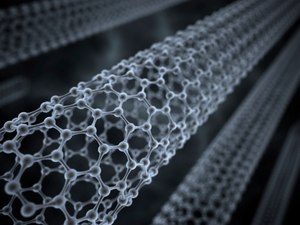Organic Electronics

Organic electronics utilize organic polymers or small molecules to create electronic components for many new application areas. Organic electronic materials are lighter, more flexible, and less expensive than conventional silicon-based inorganic materials. Organic electronics are more energy-efficient and resource-friendly in production, use, and disposal.
Small molecule organic electronics are typically fabricated using vacuum-based deposition methods to transfer thin films of organic materials onto the substrate surface. Organic electronics can be made from conductive polymers using low-cost solution processing methods. Semiconductor polymers can be made soluble and turned into an ink, making it possible to print electronic circuits directly into large plastic sheets. These materials are compatible with large-area, roll-to-roll manufacturing processes, which can easily be scaled-up for rapid production at lower cost.
Featured Categories
A comprehensive offering of carbon nanomaterials from fullerene, to carbon nanotubes, graphene, carbon quantum dots and nanodiamonds to empower your research and development in energy storage, high performing electronics, smart composites, and novel nano therapeutics.
We provide well-defined liquid crystal materials spanning nematic, cholesteric, smectic, and discotic phases, as well as liquid crystal polymers and mesogens to facilitate the design of ordered, smart, stimuli-responsive molecular systems.
We offer a selection of high purity, state-of-art dopant and emitter materials, host materials, and charge transport materials to facilitate your OLED and PLED research
Light up your research with our comprehensive portfolio of photonic and optical materials, including laser, infrared, near-infrared, chemiluminescent, photochromic, thermochromic, phthalocyanine, and porphyrin dyes, as well as photoluminescent, non-linear optical (NLO) and waveguide materials.
Organic light-emitting diodes (OLEDs)
Organic light-emitting diodes (OLEDs) are electroluminescent devices consisting of an organic semiconductor emissive layer sandwiched between an anode, which is positively charged to inject holes, and a cathode, which is negatively charged to inject electrons, and transport layers that permit different electrical charge carriers to flow into the semiconducting emissive layer. Light is generated directly when charges injected at the electrodes recombine in the organic layer. OLEDs produce vibrant colors and brighter light, providing better contrast in displays. Due to the thinner, more flexible properties of organic materials, OLEDs can be used in curved monitor screens, foldable or rollable mobile devices, and wearable devices.
Organic field-effect transistors (OFETs) & Organic thin-film transistors (OTFTs)
Organic transistors are the basic building blocks for flexible integrated circuits and displays in high-performance electronics. Transistors switch power on and off. Source and drain electrodes have direct contact with an organic semiconductor. The gate electrode is isolated from the semiconductor by the dielectric insulator. When voltage is applied to the gate, it makes the semiconductor more or less conductive, either allowing or preventing electrical current to flow between the source and drain. All components, ranging from conductors (for electrodes) and semiconductors (for active channel materials) to insulators (for gate dielectric layers), can be composed of organic materials. Thin-film transistors are a special type of field-effect transistors, in which the semiconductor, electrode and dielectric layers are deposited as thin films onto a supporting substrate. Common electronic applications include RFID tags or electronic paper.
Organic photovoltaics (OPVs)
Organic electronic materials can also be used as donor and acceptor materials to convert light into electricity in solar panels. In OPVs, photoactive layers of semiconducting organic materials are sandwiched between two electrodes to generate photocurrents. Since the donor absorbs the solar photon flux, donor materials must have wide optical absorption to match the solar spectrum. Organic hole-transport materials (HTMs) used in perovskite solar cells have proven to be particularly efficient in maximizing charge transport and harvesting solar energy.
Visit our document search for data sheets, certificates and technical documentation.
Related Articles
- LEPs enable a wide range of important applications including sensors, flexible LED displays and lighting devices, optical pump lasers, and potentially polymer diode lasers.
- Organic Light-emitting Diodes (OLEDs) are solid-state devices that transform electrical energy into light. OLEDs are considered the next generation technology for high-resolution flexible displays and solid state lighting, attracting intense scientific and industrial interest.
- Thieno[3,2-b]thiophene-based organic semiconductors exhibit high mobility, stability, and reproducibility in OFETs.
- Three-dimensional printing technology applications range from personal tools to aerospace equipment.
- Inkjet printing is one of the key enabling technologies of printed electronics. Inkjet printing technology classification, aspects of materials (inks, substrates) and respective pre-and post-processing steps are discussed.
- See All (71)
Related Protocols
- SAMs are versatile surface coatings for chemical resistance, bio-compatibility, sensitization, and molecular recognition for sensors and nano fabrication.
- Hydrolyzing agents deprotect protected thiol derivatives, obtaining unstable free thiols during complex compound synthesis for self-assembled monolayers.
- Create durable hydrophilic PDMS surface appropriate for multiple printing applications using hydrophilic inks.
- See All (4)
Find More Articles and Protocols
How Can We Help
In case of any questions, please submit a customer support request
or talk to our customer service team:
Email custserv@sial.com
or call +1 (800) 244-1173
Additional Support
- Chromatogram Search
Use the Chromatogram Search to identify unknown compounds in your sample.
- Calculators & Apps
Web Toolbox - science research tools and resources for analytical chemistry, life science, chemical synthesis and materials science.
- Customer Support Request
Customer support including help with orders, products, accounts, and website technical issues.
- FAQ
Explore our Frequently Asked Questions for answers to commonly asked questions about our products and services.
To continue reading please sign in or create an account.
Don't Have An Account?



